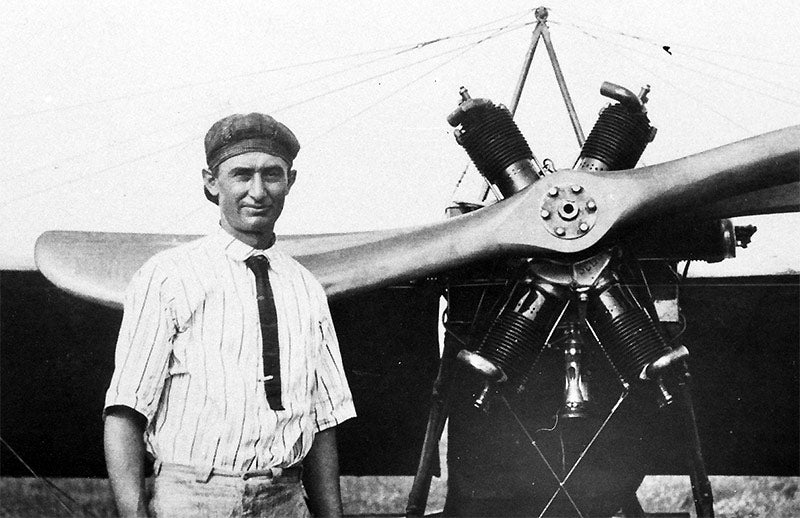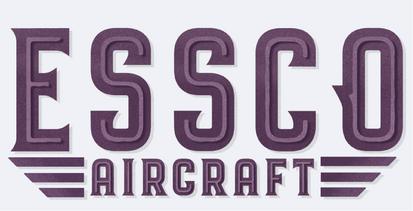
Aviation Appreciation Friday - Clyde Cessna
Born on December 5, 1879, in Hawthorne, Iowa, Clyde Cessna grew up in rural Rago, Kansas, after his family moved there when he was two. He displayed early mechanical skills, improving farm equipment and developing new farming techniques. He later became a successful car dealer in Enid, Oklahoma. Cessna’s interest in aviation was sparked in 1910 after witnessing an aerial exhibition in Kansas, prompting him to move to New York to work briefly at the Queen Aeroplane Company, where he first learned about aircraft construction.
In 1911, Clyde Cessna built his first airplane, the "Silverwing," a monoplane modeled after the Bleriot XI and powered by a modified 40-hp Elbridge motorboat engine. Testing the aircraft in the Great Salt Plains of Oklahoma, Cessna’s initial flights ended in failure. He had 13 unsuccessful attempts before a brief, yet hopeful, flight that resulted in a crash into trees. Frustration fueling him, he vowed to succeed, and in June 1911, he achieved his first successful flight. By December, he completed a 5-mile flight, becoming the first person to build and fly an airplane in the Heartland of the U.S.

Silverwing
Photo Credit: simpleflying.com
After the success of the Silverwing, Cessna left the automobile industry to focus entirely on aviation. Between 1912 and 1915, he developed several new monoplanes powered by Anzani 6-cylinder engines. In 1916, he acquired a building to construct a new plane for the 1917 exhibition season. However, when the U.S. entered World War I in 1917, exhibition flying ceased, forcing Cessna to return to his family farm near Rago, Kansas. Following World War I, public interest in private flying grew, prompting Clyde Cessna, along with Walter Beech and Lloyd Stearman, to co-found the Travel Air Manufacturing Company in 1925 in Wichita, Kansas. Cessna helped the company become one of the leading U.S. aircraft manufacturers, thanks to his innovative designs, which set multiple speed and distance records. However, two years later, Cessna left the company due to disagreements with his partners over his preference for monoplane design vs. biplane designs, and he decided to start his own firm.
On September 7, 1927, Clyde Cessna partnered with aviation entrepreneur Victor Roos to form Cessna-Roos Aircraft, but Roos resigned after just one short month, selling his interest back to Cessna, who renamed the company Cessna Aircraft Corporation in December. Cessna initially struggled to build an efficient monoplane but completed the AW in late 1927, followed by the CW-6 in 1928 and the DC-6 in 1929. Despite these successes, the Great Depression caused a sharp decline in sales, leading to the company's bankruptcy and closure in 1931. Cessna reopened the Wichita plant in 1934 but sold it to his nephews, Dwane and Dwight Wallace, in 1936. Afterward, Cessna returned to farming, only participating in the company ceremonially at Dwane's request.

Dwane Wallace
Photo Credit: ainonline.com
For the next four decades, Dwane Wallace led Cessna, transforming it from a small manufacturer of light planes into the world’s leading producer of such aircraft, as well as a key supplier of civilian and military jets. Starting in 1933, Dwane Wallace assisted Clyde and Eldon Cessna in developing the CR-3 aircraft, an improved variant of the Cessna Model A series, while also producing older DC-6A cabin monoplanes. In 1934, Wallace, with contributions from Eldon and other engineers, designed the Cessna C-34, a low-drag aircraft that achieved 162 mph with a 145-horsepower engine. The C-34 introduced wing flaps to Cessna, improving efficiency and landing capabilities, and its success in races boosted sales, with 33 sold in 1936. Wallace’s exhibition flying and racing also brought prize money, helping the company survive during the Great Depression, when he took no salary.
By 1935, Wallace had added aircraft maintenance services, and in 1938, he began developing the Cessna T-50 Bobcat, the company’s first twin-engine aircraft. Despite not being formally trained in twin-engine flying, Wallace taught himself to pilot the Bobcat, and his gamble on the civilian and military markets paid off with the onset of World War II. Under Dwane Wallace, Cessna Aircraft Company secured contracts during the early years of World War II to produce training variants of the Bobcat for the Royal Canadian Air Force and, as the AT-8 advanced trainer, for the U.S. Army Air Corps. Over 5,000 Bobcats were delivered by war’s end, helping Cessna establish itself as a major aircraft manufacturer. Additional wartime contracts, such as assembling Waco CG-4A combat gliders and producing parts for advanced aircraft like the Douglas A-26 and Boeing B-29, allowed Cessna to advance technologically beyond other pre-war light plane makers. After World War II, Dwane Wallace led Cessna Aircraft Company back into the civilian market with a key advantage—expertise in all-metal aircraft construction, thanks to technologies developed by former Cessna Vice President Albin K. Longren and wartime government contracts. Wallace quickly developed the all-metal Cessna 190/195, a 6-seat executive aircraft, followed by the highly successful Cessna 120/140 two-seaters, which dominated the market and drove many competitors out of business. He then introduced the 4-seat Cessna 170 and eventually the nosewheel-equipped Cessna 172, which became the world’s most popular light airplane. Wallace also expanded into light twin-engine aircraft, notably the Cessna T-50 Bobcat, and pursued military contracts, producing sections of U.S. jet aircraft and developing the Cessna T-37 trainer. In the 1950s and 1960s, Wallace diversified Cessna’s product line, acquired avionics and propeller companies, and expanded production globally. His leadership earned Cessna the Presidential "E" for Export Award in 1964, and he guided the company in producing over 100,000 aircraft by 1972, including the iconic Citation business jet, which became the world’s most popular. Wallace served as Cessna’s president from 1935 to 1964, then as chairman, overseeing its rise as the world’s largest civilian aircraft manufacturer, with over 170,000 aircraft produced by the end of his tenure.
Clyde Cessna died on November 20, 1954, at age 74 in Wichita, Kansas. He was posthumously inducted into the National Aviation Hall of Fame in 1978 and the International Air & Space Hall of Fame in 1983. In 2013, Flying magazine ranked him 27th on its list of the 51 Heroes of Aviation. The Kingman Airport – Clyde Cessna Field in Kingman, Kansas, is named in his honor.
Bibliography:
SimpleFlying.com - Clyde Cessna's First Aircraft: A Look At The Cessna Silverwing
National Aviation Hall of Fame: Clyde Vernon Cessna
FlyingMagazine.com - Clyde Cessna Helped Form Legendary Aviation Trinity in Wichita
